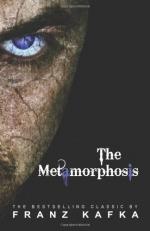|
This section contains 493 words (approx. 2 pages at 300 words per page) |

|
In animals, metamorphosis is the change in structure from larva to adult. Examples of animals that undergo metamorphosis include insects, tunicates, and anurans (frogs and toads). Tunicates are animals with a notochord in the larva and no internal skeleton in the adult. Amphibians are the only vertebrates that have metamorphosis as part of their life cycle.
In Anurans, tadpoles (larvae) live in water, while adults live on land. Tadpoles are herbivores with internal gills, a lateral line system that detects water movements, and a long finned tail. They have no legs, swim with undulating movements and resemble fish. During metamorphosis, they develop legs and lose their gills and lateral line system. A double-loop circulatory system with a three-chambered heart replaces the single-loop two-chambered heart. The young amphibians develop air breathing lungs, and a pair of external eardrums. They become carnivores as teeth and jaws appear, and they can...
|
This section contains 493 words (approx. 2 pages at 300 words per page) |

|


